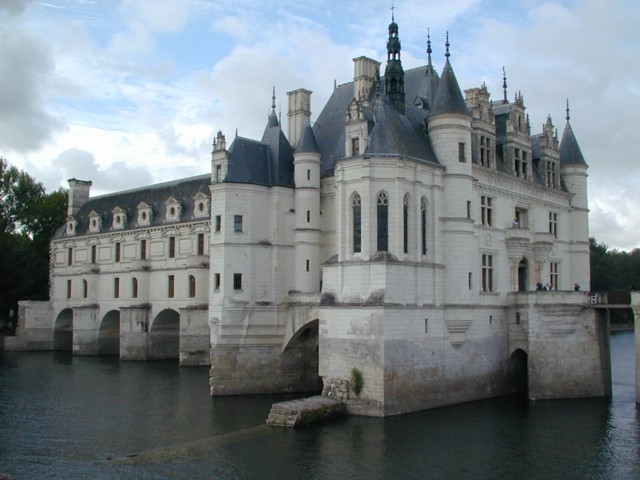

Today we had another long day-trip from our hotel and back; first we went to the Château of Chenonçeau, a uniquely beautiful pleasure palace on the Cher River. In this case I literally mean on the river; the palace was built in the 16th century on the foundations of a fortified mill from the Middle Ages. It was given by King Henry II to his mistress, Diane of Poitiers, in 1547, and she ordered extensive interior and exterior alterations as well as the creation of a beautiful garden outside.
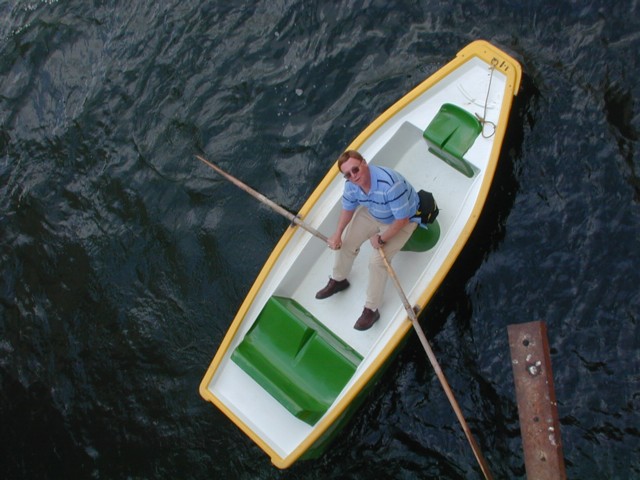
In the moat, connected to the river, was a place where you could rent a rowboat for just a couple of Euros, and several of our people took to the water for a different perspective on the castle, or just for fun.

The King ostensibly gave the castle to Diane for her family's service to the crown, not as a personal favor; the decorations in many places show this monogram, with an "H" for Henry intertwined in respectable fashion with the double "C" of his wife, Catherine of Medici. However, the intertwined letters surreptitiously show a "D" for Diane...
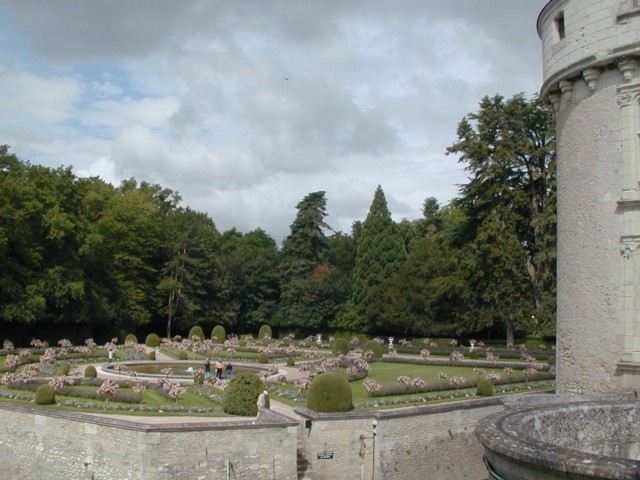
Upon Henry's death in 1559, Catherine gave Diane the boot, forcing her to "trade down" to another castle. Catherine then proceeded to implement even grander redecorating plans than her former rival, including this beautiful garden on the other side of the castle.
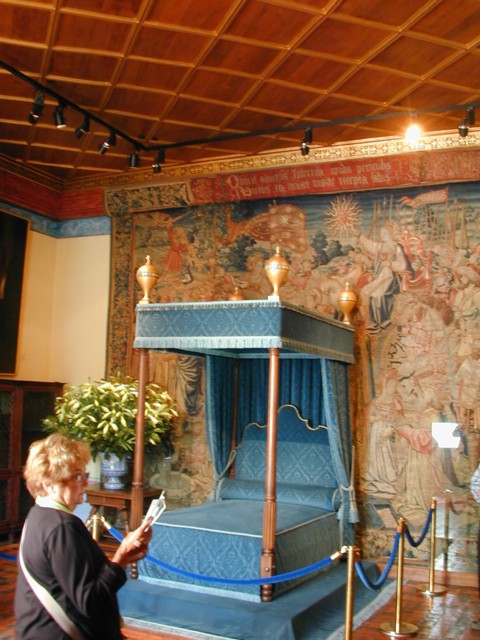
Just about every surface inside the castle is decorated in one way or another, whether with paint or tapestries. This is the bedroom of Diane of Poitiers; a vast tapestry on the wall behind her bed shows the Triumph of Charity, illustrated with biblical figures, and another shows the Triumph of Force on the opposite wall.
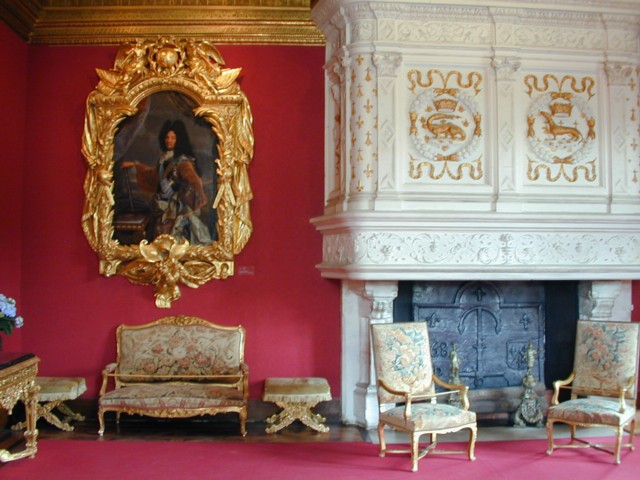
This room contains furniture the then owner of the castle received from King Louis XIV, along with a portrait of the king, in memory of his visit to Chenonçeau in 1650.
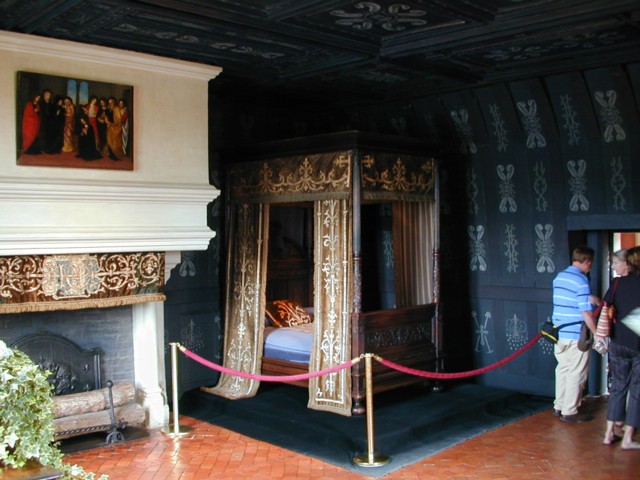
The rooms of the castle were furnished and decorated with artifacts related to various owners and occupants. Frequently you could get a pretty good picture of someone's personality and style by looking at his or her room; for example, Louise of Lorraine lived here while mourning for her assassinated husband King Henry III.
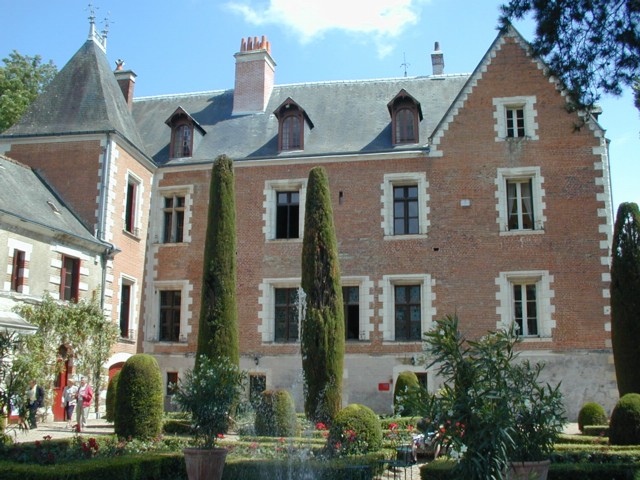
After reluctantly leaving Chenonçeau, we drove to nearby Amboise, where Leonardo da Vinci spent the last three years of his life. He was invited to come to France in 1516, and given this house, called Clos Lucé, by King François I. The king had become interested in the new ideas of the Italian Renaissance while visiting there, and wanted Leonardo to help him spread them to France. Regrettably, photographs weren't allowed inside; there were many interesting artifacts from da Vinci's life, and a gallery of models of some of his many inventions, from an armored tank to a glider, a parachute, and a helicopter. As a civil and military engineer he was centuries ahead of his time, as well as a magnificent artist and architect; if he had had access to steam power, we'd all be speaking Italian today!
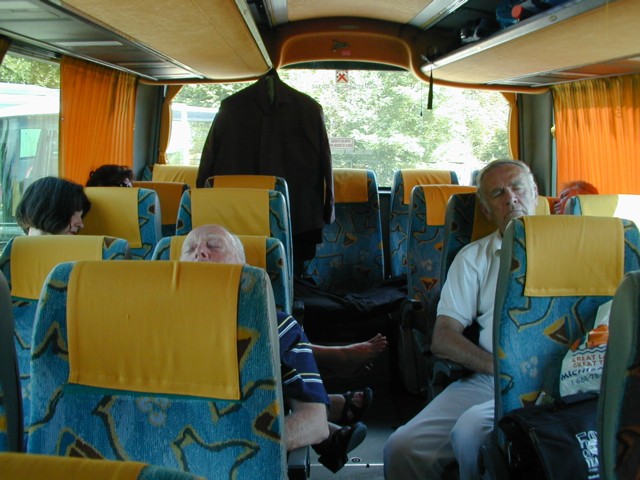
Amboise has a castle, and an interesting-looking Old Town; however, as we did yesterday, many of us spent a large part of our time in the town having a leisurely (and delicious!) lunch. The buses came back early to the parking lot where they were to pick us up, and several folks took advantage of this to catch a nap on the bus before the rest of the group returned from visiting the town.
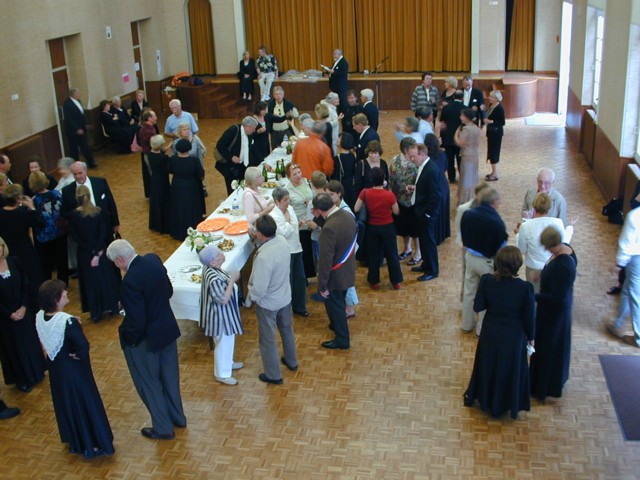
Next we drove to Onzain, a small town nearby, where we were to give our second and final formal concert of the tour. The people of the town gave us a very warm welcome at a reception next to the City Hall.
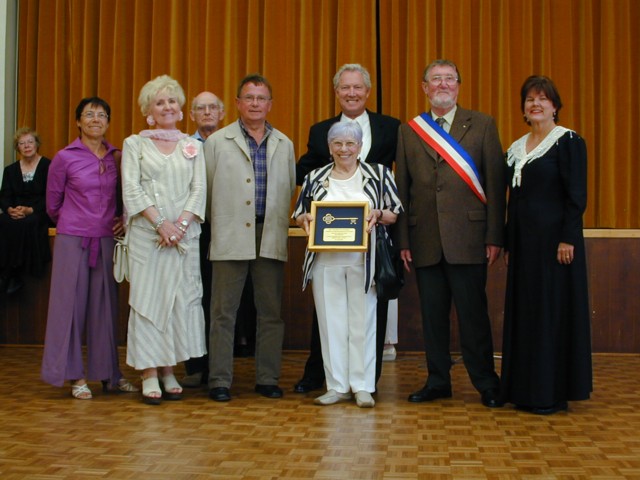
Several town dignitaries were in attendance; from left to right are Mme. Courson of the tourism committee, Mme. Jacqueline Joly of the Mayor's office, Donald Munro, a friend of the Hatlies who had helped arrange the visit, Deputy Mayor Michel Imbault, Guy Hatlie and Mme. Colette Bouffault, president of the tourist bureau, Mayor Jean-Pierre Diard, and Pat Edwards. Pat was presented with many gifts, including a beautiful medallion and a book on the Châteaux of the Loire Valley; Mme. Bouffault is an accomplished artist, and she also gave Pat three prints of her artwork and an illustrated book she had done with her mother on the history of the town (helpfully translated into English for us!). As at Le Bugue a few days ago, Guy presented our hosts with a key to the city of Manhattan Beach, here held by Mme. Bouffault.
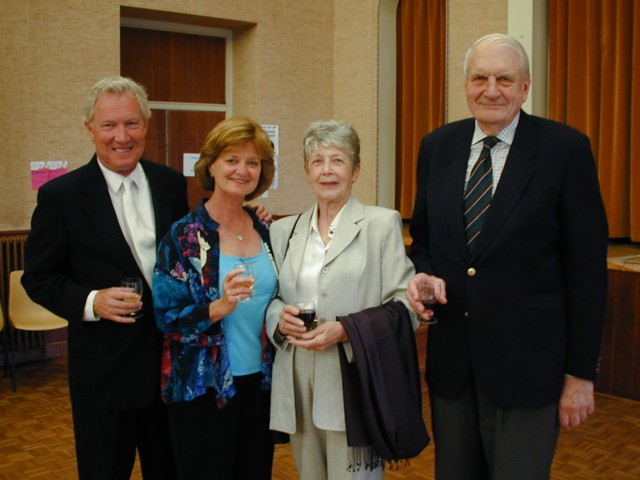
Here are Guy and Judy Hatlie with their friends John and Barbara Bishop, who also live in Onzain and had helped arrange our visit.
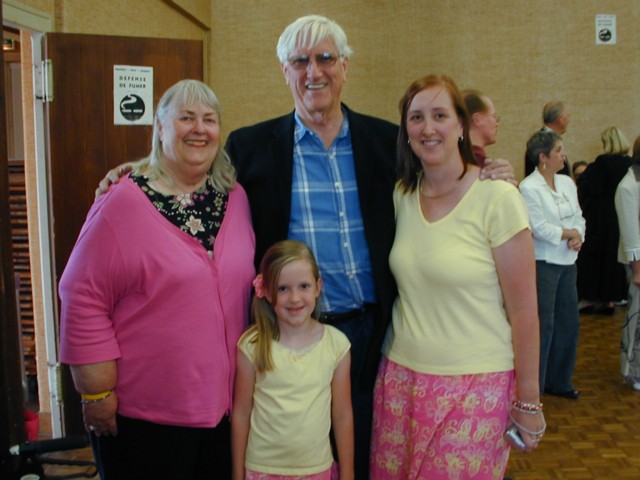
And Carol and Bob Jones from our church were also there! They were visiting their daughter Janna Grundeken and granddaughter Krista in Holland, and brought them here as well. Small world!
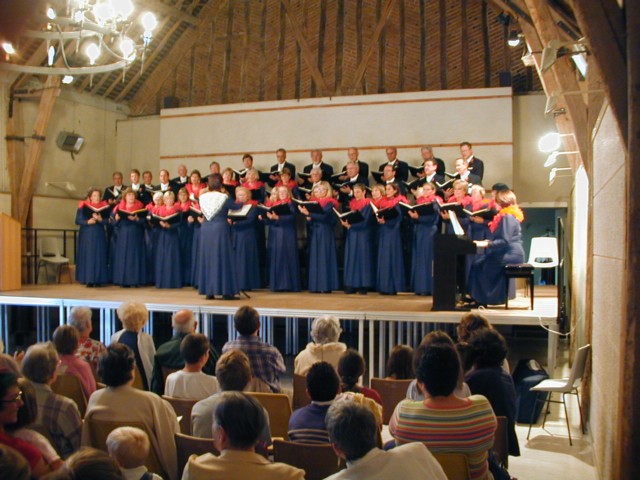
Our concert that evening was at the Grange; this means "barn" in French, and in many towns it refers to a community crop-storage facility that has been refurbished for use as a cultural center and meeting place. Midwesterners among us know the Grange as a farmers' mutual assistance organization, probably with the name having similar origins. The stage was high, and close to the first of several chandeliers; I probably should have made a leap for it during our medley from The Phantom of the Opera! The house was packed to standing-room-only; the audience was enthusiastic, rewarding us at the end with a standing ovation, an encore, and some nice flowers that (as I write) Pat has brought with her to Paris. All in all we had a wonderful evening, enjoying the warmest of welcomes. I'm sorry that, because we got back rather late, I again just took care of email and postponed writing the webpage for a day.
 To
Friday, 8 July 2005
To
Friday, 8 July 2005 Back
to choir tour itinerary
Back
to choir tour itinerary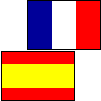 Back
to choir tour home page
Back
to choir tour home pagenew 8 July 2005